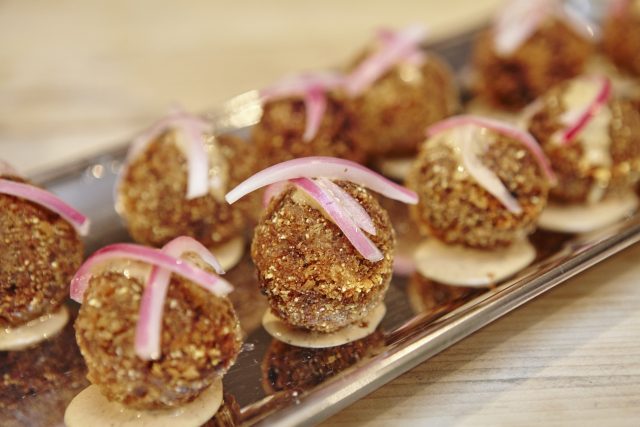Ricotta Cheese: Step-by-Step Guide and Creative Uses
Making homemade ricotta cheese saves money compared to buying it at the store. You control the ingredients and portion size, avoiding waste. For example, you can use lemon juice or vinegar as an acidulant, depending on your preference. Personalize the flavor by adding herbs or spices, tailoring it to your taste. This customization isn’t typically available with store-bought options.
Healthier Option with Fewer Additives
Store-bought ricotta often contains preservatives and additives. Homemade ricotta uses only simple ingredients like milk, an acidulant, and salt. This reduces your intake of unnecessary chemicals. For instance, using organic milk ensures higher nutritional quality. Making it at home guarantees a fresher product, as you control the entire process.
Key Ingredients for Homemade Ricotta Cheese
Essential Ingredients and Their Roles
To make homemade ricotta cheese, you need a few basic ingredients. Each component plays a crucial role in achieving the desired texture and flavor:
- Whole Milk: Provides creaminess and richness. Use high-quality whole milk for the best results.
- Heavy Cream: Enhances creaminess. Adding heavy cream results in a richer and smoother ricotta.
- Lemon Juice or White Vinegar: Acts as an acid to coagulate the milk. Lemon juice gives a slight citrus flavor, while white vinegar offers a neutral taste.
- Salt: Adds flavor. A pinch of salt enhances the overall taste without overpowering the cheese.
Variations and Substitutions
You can adapt the recipe to suit dietary preferences or ingredient availability:
- Milk Alternatives: Substitute whole milk with goat’s milk for a tangier flavor, or use lactose-free milk if lactose intolerant.
- Acid Choices: Replace lemon juice or white vinegar with citric acid for a consistent result.
- Additional Flavorings: Incorporate herbs like basil or chives, or add a touch of honey to create a unique taste profile. Adjust the quantity to match your flavor preferences.
Remember, experimenting with these variations can yield a homemade ricotta tailored to your taste. Whether sticking to the basics or trying new ingredients, the process remains straightforward and rewarding.
Step-by-Step Guide to Making Ricotta Cheese
Preparing Your Ingredients and Equipment
Use fresh, high-quality whole milk and heavy cream for the best results. Measure 4 cups of whole milk and 1 cup of heavy cream. Prepare 3 tablespoons of lemon juice or white vinegar and 1 teaspoon of salt. Ensure all utensils and equipment are clean. Use a heavy-bottomed pot to prevent burning, a thermometer to monitor temperature, a slotted spoon for stirring, cheesecloth for straining, and a colander. These preparations ensure a smooth and efficient cooking process.
Cooking Process and Tips
Heat the milk and cream mixture to 185°F (85°C) using medium heat, stirring occasionally to avoid scorching. Remove from heat once the temperature is reached. Add lemon juice or vinegar, stirring gently. Let the mixture sit undisturbed for 5-10 minutes until curds form. Line a colander with cheesecloth and place it over a large bowl. Pour the mixture into the cheesecloth-lined colander. Allow the whey to drain for about 30 minutes for a firmer texture or less for a creamier consistency. Transfer the ricotta to a bowl and store it in the refrigerator. Freshness and patience are key to achieving the perfect ricotta texture.
Troubleshooting Common Problems
If curds don’t form, reheat the mixture to 185°F and add more acid, 1 teaspoon at a time, until curds appear. For rubbery ricotta, reduce the heating time and lower the temperature slightly during coagulation. Should you find the cheese too dry, reduce the draining time or add a little whey back to the ricotta. Clean equipment helps prevent contamination, ensuring your ricotta stays fresh longer. Experiment to perfect your ricotta-making skills and adapt to different conditions or ingredients.
Creative Uses for Your Homemade Ricotta
Sweet and Savory Dishes
Homemade ricotta complements a range of sweet and savory dishes. For dessert, light and fluffy ricotta can enhance cheesecakes, cannoli, and pancakes. Ricotta-stuffed crepes, muffins, and lemon-ricotta cookies also benefit from fresh ricotta’s texture.
On the savory side, incorporate ricotta into lasagna, stuffed shells, and manicotti. Ricotta also works well in savory tarts, frittatas, and as a pizza topping. Spread it on toasted bread with your favorite herbs for a simple yet delicious appetizer. Mix it with roasted vegetables for a rich, creamy side dish.
Incorporating Ricotta in Everyday Meals
Use homemade ricotta in various everyday meals. Add a dollop to your morning smoothie for a protein boost. Stir it into oatmeal or yogurt for added creaminess. For lunch, use ricotta in wraps or sandwiches as a spread.
Incorporate ricotta into sauces for pasta or soups to create a velvety texture. Use it in salads as a cheese substitute, pairing well with tomatoes, olives, and arugula. Check its freshness regularly, and consume within a few days for the best taste.
Conclusion
Making your own ricotta cheese at home is not only simple but also incredibly rewarding. With just a few basic ingredients and a bit of patience, you can elevate your culinary creations to new heights. Whether you’re adding it to savory dishes like lasagna or sweet treats like cheesecakes, homemade ricotta brings a fresh, creamy texture that store-bought versions simply can’t match.
Don’t be afraid to experiment with different recipes and uses. From smoothies and oatmeal to sandwiches and salads, the versatility of homemade ricotta is unmatched. Remember to maintain cleanliness throughout the process to ensure the best results.
By mastering this easy recipe, you’ll have a delicious, fresh ingredient at your fingertips, ready to enhance any meal. So roll up your sleeves and start making your own ricotta cheese today. Your taste buds will thank you!






